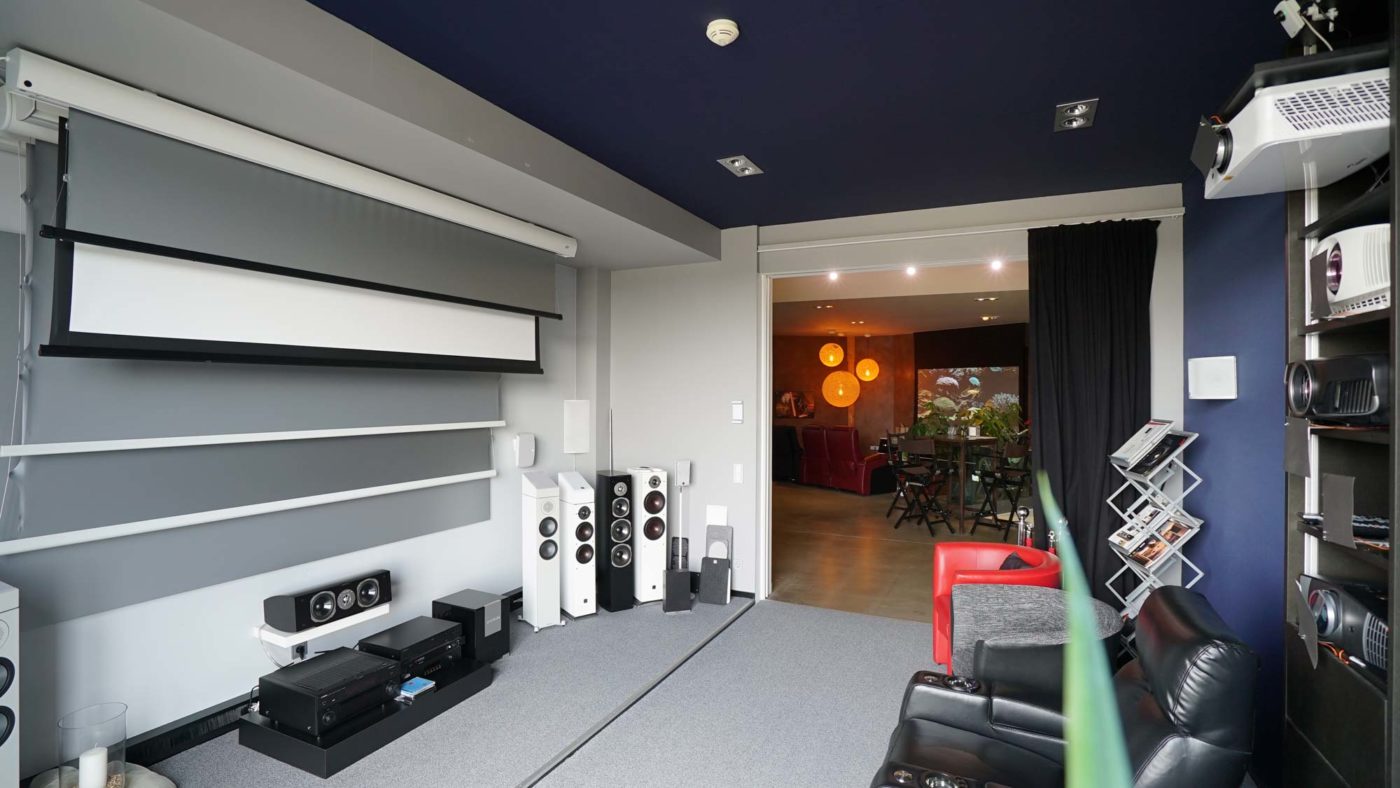The screen is the magic place where the cinema image appears.
There are a variety of different types of screens here, which of course have a significant effect on the projected image.
Motorized screen:
In a living room, one usually uses a motorized roll screen, which rolls out the screen cloth only when the cinema is in operation. The projection can then be done in front of a wall unit, a TV or a picture.
Image widths of over 3m are possible here!
Contrast screens:
Especially in the field of contrast screens, a lot has happened in recent years.
Gone are the days when you had to completely darken the room to get a plastic image.
A contrast screen increases the plasticity of the image many times over compared to a classic white screen!
In direct comparison in our showroom, our customers are thrilled by the difference.
We demonstrate this in various lighting conditions that correspond to daily use at the customer’s home. Thus the decision of our customers falls in over 90% on a contrast canvas.
We have contrast screens from the following manufacturers as motor and frame screens in our assortment:
VNX, Elitescreen
Frame screen:
In a separate home theater room, a frame screen is usually used. It is permanently visible and the face of a home theater. Different cloth materials are used here.
Also different image formats. We are talking about 16:9 and 21:9 format.
21:9 format is the cinema format.
Acoustically transparent version:
With an Acoustically Transparent screen, the speakers can be positioned behind the screen, just like in a commercial cinema. Thus, image and sound are connected in the best possible way. In addition, larger image widths are possible, since the space required for the speakers next to and below the screen in a normal screen is eliminated.
We always try to implement this solution in our cinema solutions. You can experience this in our Matrix Cinema in our showroom.
We use here exclusively screens of the British manufacturer Screen Excellence.
Maskable frame screen:
Since we have different aspect ratios in the film world, depending on the format of the film, part of the screen is not used. You know this as black bars when watching movies on your TV.
You can conceal these bars at the upper and lower edge of the image by means of black masking. The plasticity of the image increases significantly, since it is now completely black bordered.
But in real cinema, we never have bars at the top and bottom; the image always has the same height. The width changes as the curtain opens wider.
This is also possible in a private home cinema if the projector is motorized and has the Lens Memory function. The image is then zoomed out larger and positioned to fit exactly into the 21:9 screen. This position is then stored.
We then have no visible bars with 21:9 films, that these disappear outside the screen. The image height is the same as before with 16:9, but the image width is increased.
With 16:9 films, the projector then moves to the first lens memory. We then have unused screen space on the right and left, which can be concealed with a lateral masking, similar to the curtain in a large cinema.
Maskable screens are constructively complex and therefore also usually very price-intensive.
We have maskable acoustically transparent screens of the manufacturer Screen Excellence in our assortment. You can convince yourself of a 21:9 solution and masking in our Matrix Cinema.
Projectors that have the function Lens Memory are available from Sony, JVC and Epson.

 Deutsch
Deutsch

